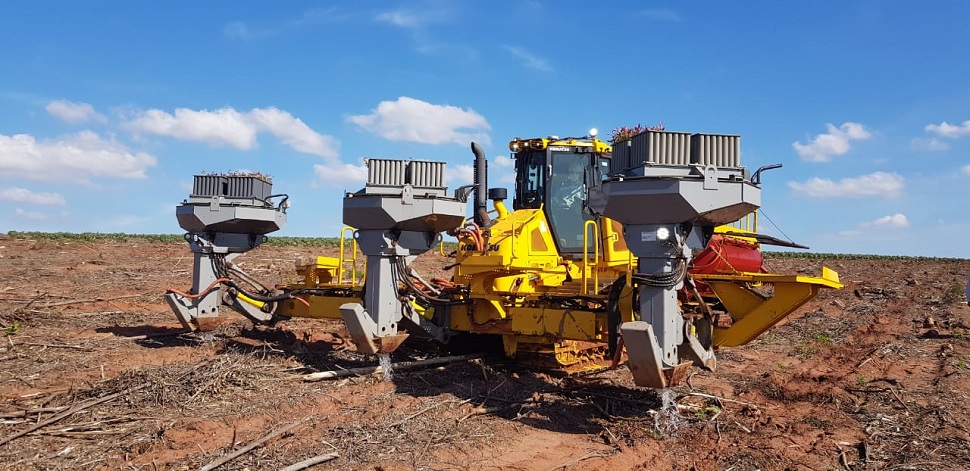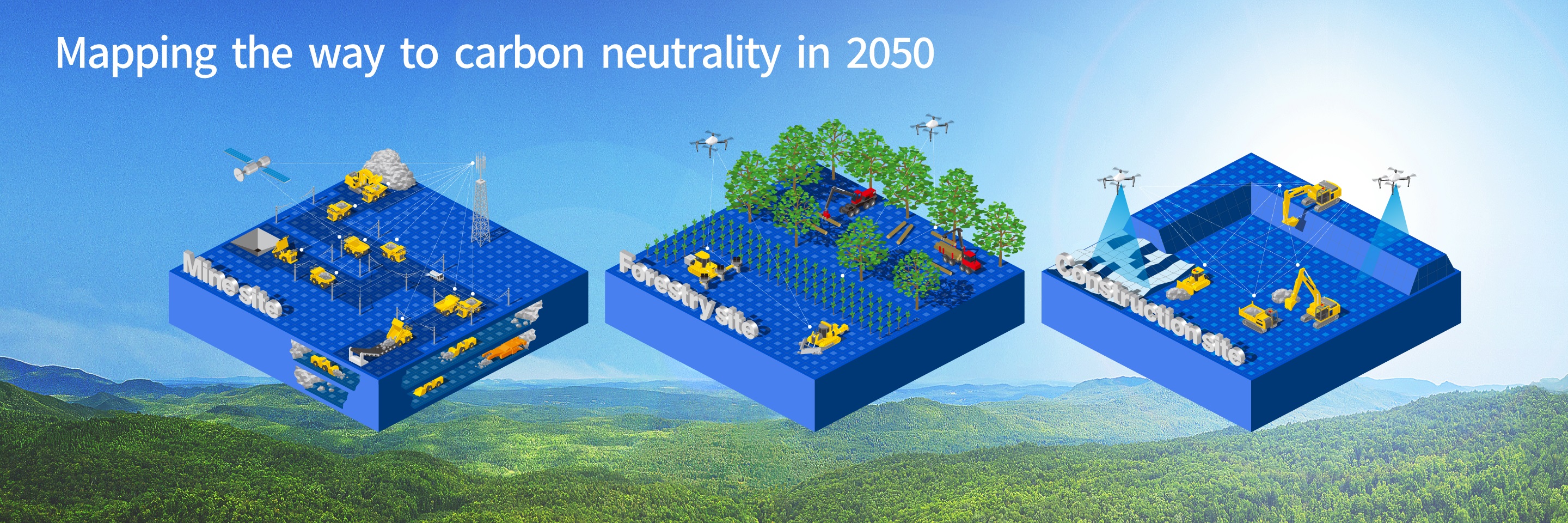
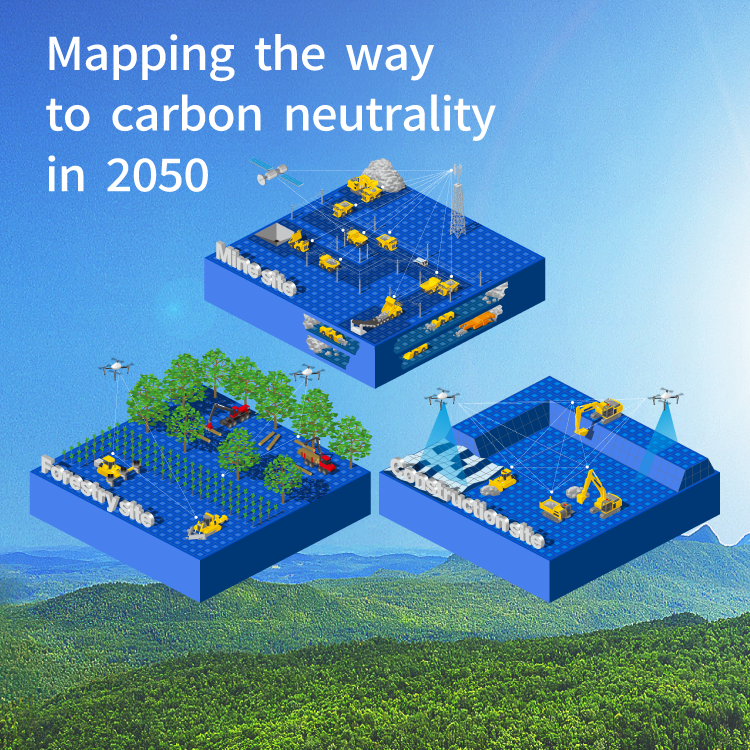
With the aim of mitigating global warming, the reduction of CO2 emissions has become an issue for companies everywhere since the 2000s.
Komatsu focused on the fact that approximately 90% of the total CO2 emissions of the Komatsu supply chain are generated at the work site and there was urgent need to develop high-efficiency, low CO2-emission construction equipment. This was an opportunity for Komatsu to fully demonstrate its preeminence as a leader in “monozukuri” – manufacturing and technology innovation.
The full-scale quest for the electrification of construction machinery could be said to have begun here in 2008, with Komatsu’s announcement of the world's first hybrid construction machine - a hybrid hydraulic excavator.Since then, the lineup of electric equipment has expended from small to large hydraulic excavators in addition to the forklift that had already achieved electrification.
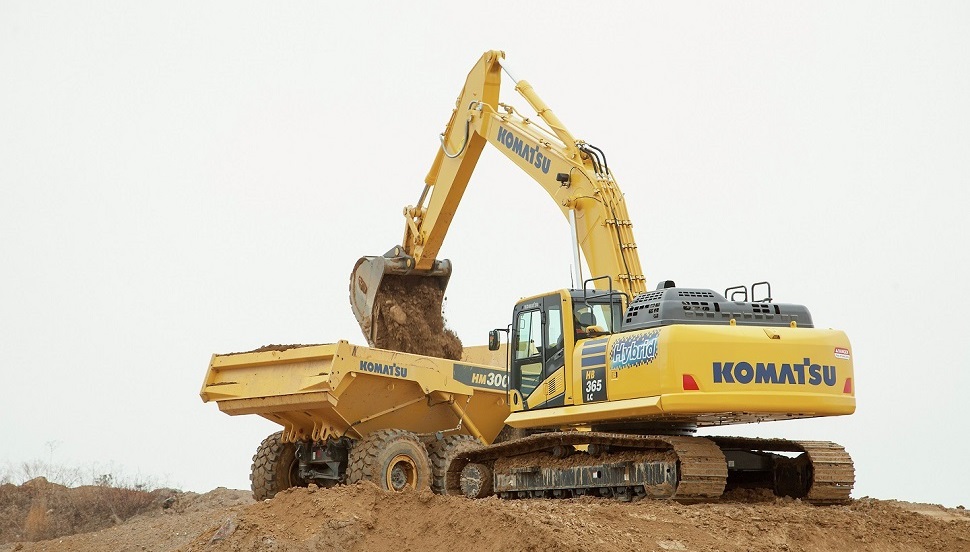
In order to clarify a path to a decarbonized future, Komatsu established that offering as many power source options for construction equipment, other than electrification, should be the direction of development. These include machines powered by batteries, fuel cells, diesel electrics, biofuel and e-fuel diesel, and hydrogen.
For example, in the extremely challenging environment of large-scale mining, dump trucks that can switch between power sources such as engines, trolleys, batteries, and fuel cells depending on the conditions on-site will be effective. At large-scale civil engineering sites and quarry sites where it is difficult to recharge batteries due to lack of power supply, or where operating hours are too long to allow time for recharging, fuel cell vehicles and hydrogen engine vehicles will be great options. Komatsu aims to provide our customers with construction machinery ideally suited for their worksite environment.
The realization of a decarbonized society demands consideration of not only advancing construction machinery but also improving the operation of the entire construction site. Komatsu believes that solutions that optimize the quantity and placement of human resources and machines to improve worksite efficiency will also effectively contribute to the reduction of CO2 emissions.
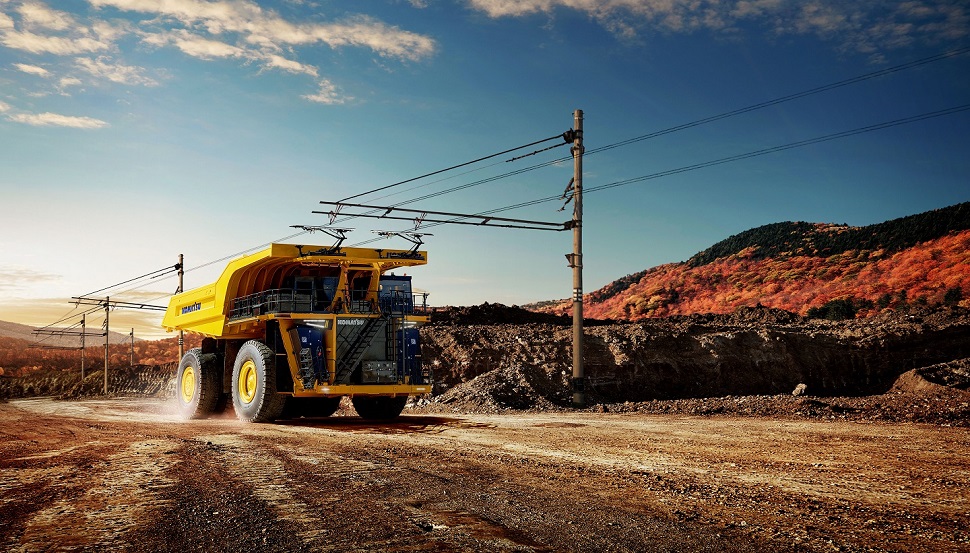
Our efforts are not limited to reducing CO2 emissions. Take for example the importance of forests in decarbonization. Their role from the perspectives of protecting the natural environment and promoting a circular economy is being reassessed and given new priority. Forest management and tree planting operations rely heavily on human labor. Through our development of planters and other afforestation machines, Komatsu aims to provide solutions that raise the overall efficiency of afforestation work and contribute to their efficient regeneration and a healthy forest cycle.
These activities will enable a net 50% reduction in CO2 emissions and 50% utilization of renewable energy by 2030.And eventually will help us achieve the challenge goal of carbon neutrality, which is the reduction of CO2 emissions to net zero (CO2 emissions and absorption of ±0) by 2050.
The road ahead for Komatsu construction machinery is clear and challenging. Our destination is a healthy future for people, society and the earth.
